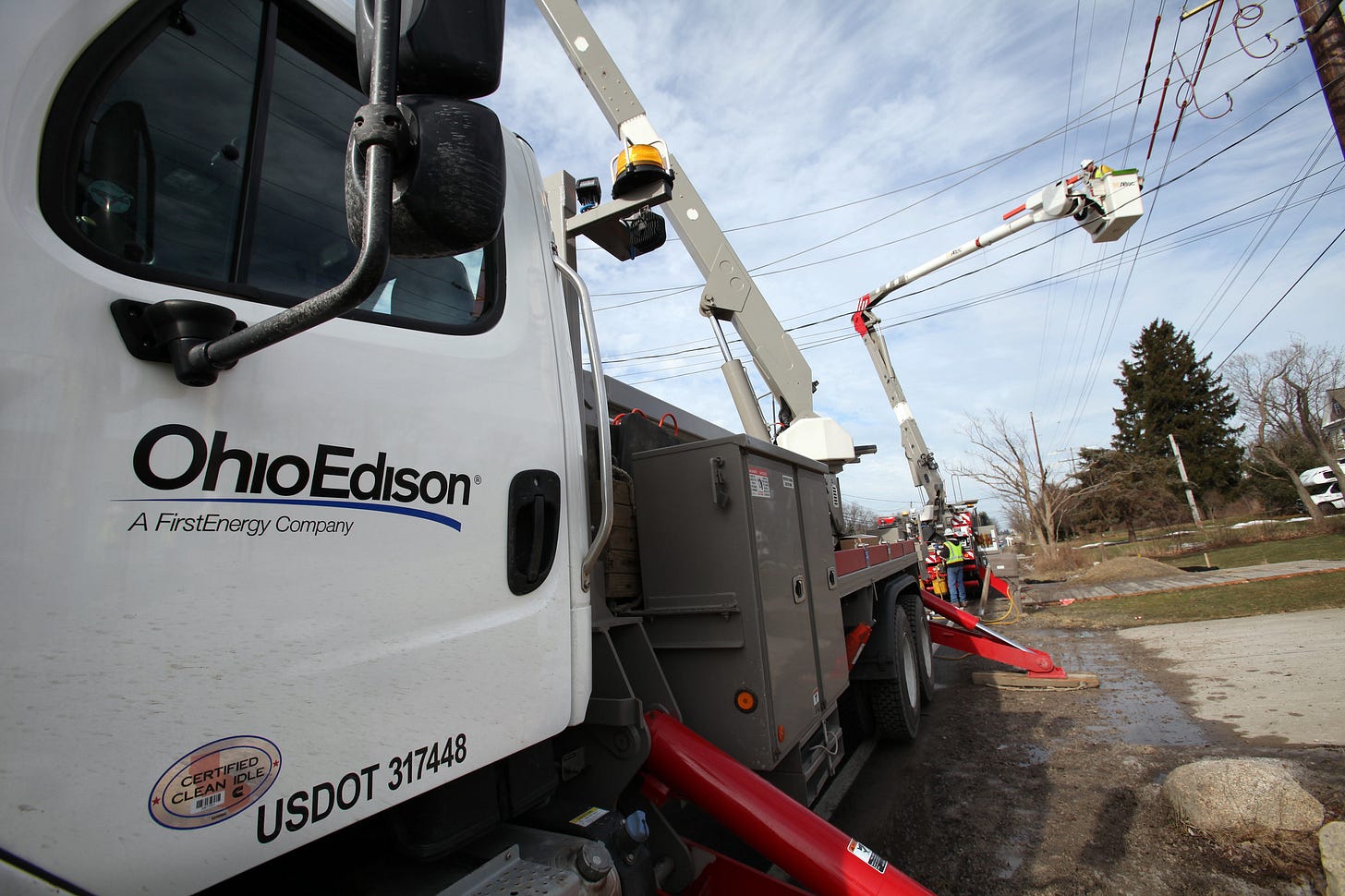Welcome to Planet Days, a green newsletter for a greenwashed Planet. Thank you to Sam Liptak for editing this week’s post.
If you’re new to Planet Days, every other week I send out a three-minute read on what it means to go green — ranging from topics on gas stoves and recycling bins to lawns and electric vehicles.
Though I live in Washington, D.C., I spent my first 27 years in Ohio. During that time, I saw a bunch of political changes, as the state — once a bellwether for presidential elections — turned solidly red.
Today, I explore what that means for climate.

Ohio is in a rough stretch.
Last month in East Palestine, a train carrying toxic chemicals derailed and exploded. A month earlier, Governor Mike DeWine signed a bill to redefine natural gas as “green.” And late last year, Ohio’s J.D. Vance became the only Trump-backed candidate to win a Senate race.
Perhaps most concerning, Ohio — one of the country’s largest producers and consumers of electricity — also has the nation’s worst clean energy program.
But Ohio isn’t an anomaly: With deep historical ties to fossil fuels, the state represents a slew of others resisting the transition to clean energy, hurting themselves and the rest of the country in the process.
Like many Appalachian states, much of Ohio’s fossil fuel love is rooted in coal: The state generates 37% of its electricity from it (compared to 20% nationally). And nowhere is coal more relevant than in Eastern Ohio, a low-income region in the foothills of the Appalachian Mountains.
Eastern Ohio is also where Republicans have made inroads on historically blue counties, weaponizing coal for votes.
“That whole region was incredibly reliant on coal, which has very much declined,” Justin Brown, who writes the Substack Battleground, told me. “Donald Trump’s promises of bringing back coal, fighting Democrats on the war on coal, was a very compelling argument for people that were living there.”
Republicans, however, have not only failed to bring back coal; they’ve also prevented Ohio from leading any transition to renewables, a transition that is now inevitable: Recent research found that it's cheaper to replace virtually every coal plant in the country with wind and solar. (Brown recently wrote about the intersection of coal and Republican success in Eastern Ohio.)
Corporations have played a huge role here. In the most recent state elections, fossil fuel groups spent over $1 million promoting Ohio Republicans. Nationally, oil and gas companies donated five times more to Republican candidates in 2020 than to Democrats.
So when trying to save coal, Ohio Republican leaders naturally turned to these same companies, jumping in bed with bankrupt utilities, like Akron’s FirstEnergy, and dark money groups tied to fossil fuels, like the Empowerment Alliance.
No clearer example of this is House Bill 6, a 2019 law passed with the help of a made-for-TV bribery and kickback scheme. The law essentially bailed out dying coal plants, while gutting clean energy standards. As a result, Ohio generates only 4% of its electricity from clean energy (compared to 22% nationally) — the smallest share of any state.
It’s a trend playing out across the country, as utilities use misdirection and disinformation to delay climate action:
In Florida, state utilities have spent millions to fight homeowners who want to install solar panels.
In Louisiana, the state’s largest utility has failed to diversify its fuel sources and opposed efforts that favor renewables.
One recent study found that for decades utilities spread climate denial, with the worst offenders having the most inadequate transition plans to clean energy.
Brown warned that Ohio’s situation goes beyond dark money. Because they hold supermajorities in both chambers, Ohio Republicans have successfully redistricted the state in their favor, boxing out many Democrats from competitive races.
So when persuading voters, Democrats can’t cite successful case studies, such as tax incentives for solar or wind, because they don’t have numbers to pass such programs.
“That’s where it becomes less about Democrats and more about democracy,” said Brown. “A lot of how Republicans are able to roll back environmental regulations is because they have a level of power that they are not actually owed through democratic norms.”
That imbalance allows fossil fuels to take over a state with little consequences: Even though the Ohio Republicans behind House Bill 6 were found guilty of accepting $61 million in bribes from utility companies, some of the worst provisions of the energy bill remain intact, including statewide subsidies for coal plants.
Ohio’s energy policy, which allows decades of avoidable emissions, spells trouble for the rest of the country. If unchecked, the state — like the train cars carrying toxic chemicals in East Palestine — will jump the tracks, dragging U.S. climate goals along with it.
And if that happens, we’re left with yet another mess we can’t clean up.



